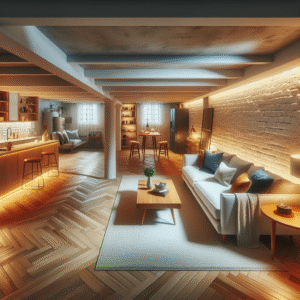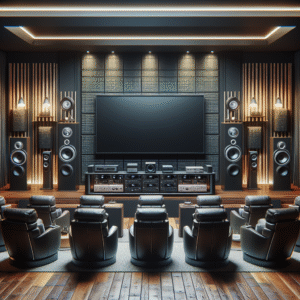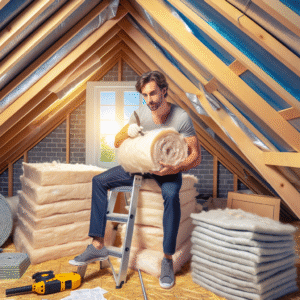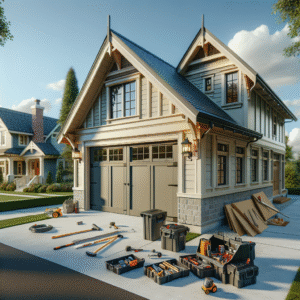Understanding Energy Efficiency in Home Construction
Energy efficiency in home construction refers to the use of design and building strategies that reduce energy consumption and enhance the comfort and durability of homes. Such practices not only help homeowners save on energy bills but also significantly diminish environmental impact. With the rising trends in sustainable living, understanding and implementing energy-efficient methods in home building has never been more crucial.
In this article, we’ll explore the essential components of an energy-efficient home, offer a step-by-step guide to building one, and discuss why it’s important for both homeowners and the environment. Whether you’re planning to build a new home or retrofit an existing one, our insights will help you make informed decisions that contribute to a sustainable future.
Core Components of an Energy-Efficient Home
Insulation and Sealing Techniques
Proper insulation and effective sealing are the bedrock of an energy-efficient home. These elements ensure that heat stays in during winter and out during summer, reducing the need for excessive heating or cooling.
Energy-Efficient Heating and Cooling Systems
Investing in modern, energy-efficient heating and cooling systems can drastically reduce your home’s energy consumption while maintaining optimal comfort levels.
Windows, Doors, and Roofing Solutions
Choosing the right windows, doors, and roofing materials can greatly enhance a home’s energy conservation capabilities. These components play a crucial role in preventing energy loss.
Step-by-Step Guide to Building Your Energy-Efficient Home
Planning and Design Considerations for Energy Efficiency
Starting with a sound design that emphasizes energy efficiency is essential. This includes orientation of the home, layout, and incorporation of passive solar techniques.
Choosing the Right Materials and Technologies
Selecting materials that provide good insulation and are sustainable is key. Additionally, incorporating advanced technologies like energy-efficient lighting and appliances can further reduce energy consumption.
Integration of Renewable Energy Sources
For those looking to take sustainability to the next level, integrating renewable energy sources such as solar panels or wind turbines can significantly offset energy costs and reduce reliance on non-renewable resources.
Building an energy-efficient home is a rewarding investment that pays dividends in energy savings and environmental protection. By following these guidelines, you can ensure that your home is not only a comfortable living space but also a beacon of sustainability and efficiency.
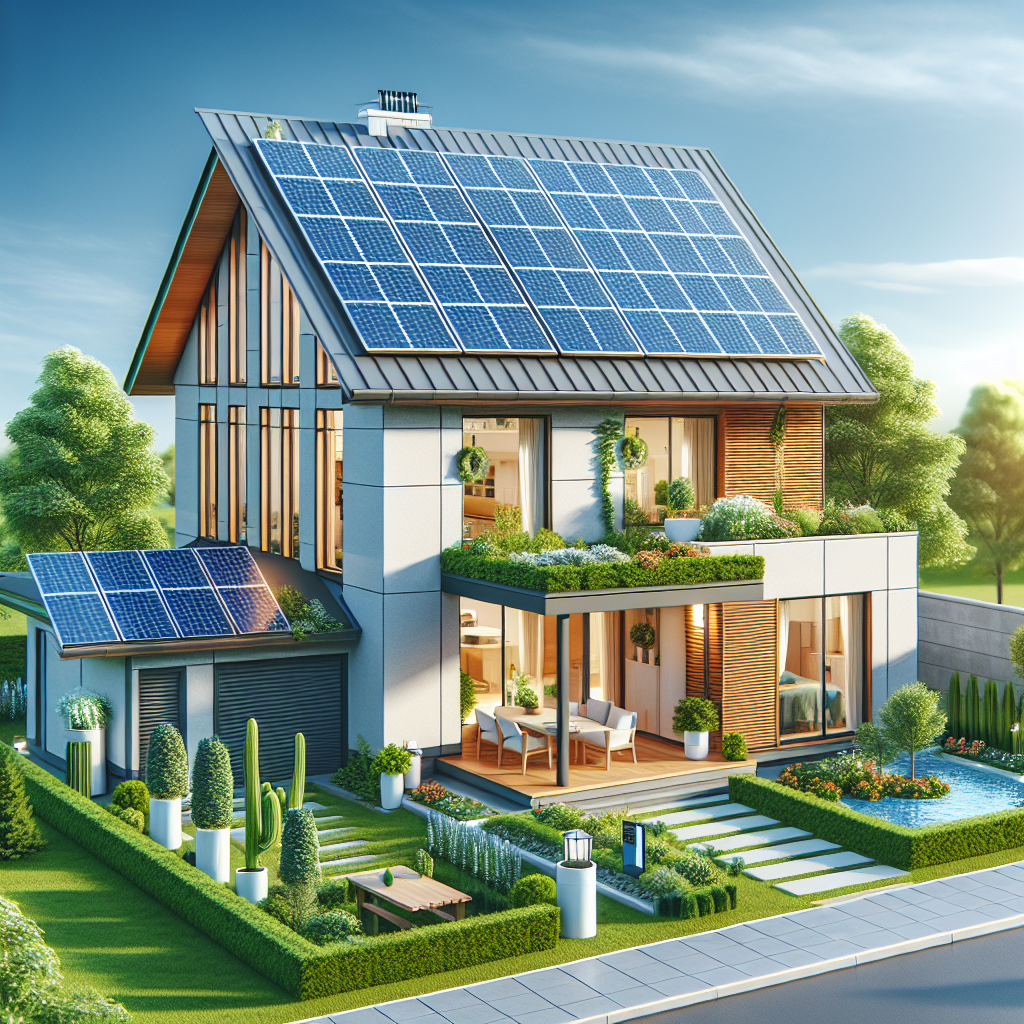
If you’re ready to take your home improvement or construction project to the next level, we can help! Find trusted contractors on BuildNet, whether you’re looking for renovations, new builds, electrical work, plumbing, or anything in between. Our directory connects you with qualified professionals who can make your vision a reality.
Understanding Energy Efficiency in Home Construction
When we talk about energy efficiency in home construction, what exactly are we referring to? Well, it’s all about creating homes that use less energy for heating, cooling, lighting, and other operations, resulting in decreased utility bills and a smaller carbon footprint. But why should you, as a homeowner, care about energy efficiency? And what’s the latest buzz around building homes that are kinder to our wallets and the planet? Let’s dive right in!
Definition of Energy Efficiency in Homes
Simply put, an energy-efficient home is designed to effectively reduce unnecessary energy consumption, greenhouse gas emissions, and its overall impact on the environment. This is achieved through smarter design, construction, operation, maintenance, and waste removal. Energy efficiency can be as simple as using LED light bulbs and energy-efficient appliances, or as comprehensive as building with advanced technologies like passive solar design and ultra-insulated walls.
Importance of Energy Efficiency for Homeowners and the Environment
The perks of energy efficiency go beyond just saving the planet. As a homeowner, energy efficiency can mean significantly reduced utility bills—sometimes by up to 20-30%! Additionally, energy-efficient homes often enjoy a higher market value, better performance, and greater comfort levels than their less-efficient counterparts. From a broader perspective, enhancing energy efficiency helps reduce national energy demand and mitigate environmental pollution, playing a crucial role in tackling global challenges like climate change.
Key Statistics and Trends in Energy-Efficient Home Building
Keeping an eye on the trends can help us understand just how swiftly the landscape of home building is evolving. Here are some compelling numbers:
- Significant Savings: According to the U.S. Department of Energy, making energy-efficient upgrades can save homeowners 5-30% on their energy bills.
- Rapid Adoption: Reports from the National Association of Home Builders (NAHB) show that more than 90% of builders consider energy-efficient features to be important in the selling process.
- Green Building Growth: Data from Dodge Data & Analytics reveals that the green building sector is expected to grow significantly, accounting for more than a third of all U.S. construction projects by volume.
This growing trend towards energy efficiency is not just a fleeting wave but a sturdy shift in how homes are built and remodeled.
By embracing energy-efficient home construction, homeowners reap the benefits of lower operational costs and enhanced indoor comfort, while also contributing to a healthier planet. Remember, every small step towards efficiency helps in making a big environmental impact. And with the construction industry increasingly leaning towards sustainable practices, now is the perfect time to consider how your home can be part of this important movement.
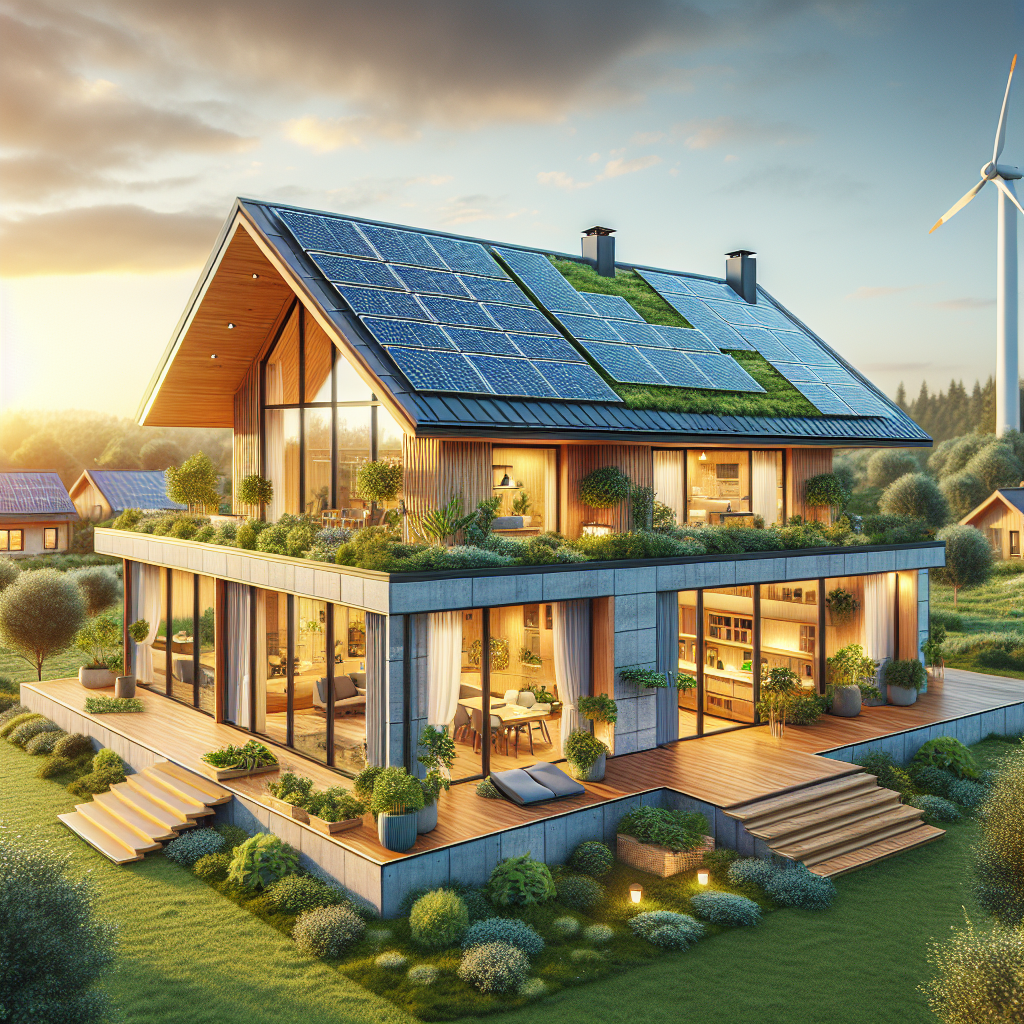
Core Components of an Energy-Efficient Home
Building an energy-efficient home is like piecing together a puzzle where every element plays a crucial role in the overall performance of your house. Let’s dive into the core components that make a home not just a shelter, but a smart, energy-conserving haven.
Insulation and Sealing Techniques
Think of insulation as the protective blanket of your home. It’s what keeps you warm in the winter and cool in the summer, all while saving on those hefty energy bills. The key here is to choose the right type of insulation for different parts of your home:
- Attic and Roof: Opt for high R-value materials like spray foam or fiberglass batts to reduce heat loss.
- Walls: Consider injected foam insulation for existing walls, and rigid foam boards for new constructions.
- Floors and Foundations: Use foam board or polyurethane spray foam to prevent cold feet and energy seepage.
But insulation’s best friend is sealing. You’ll want to prevent air leaks by caulking and weather-stripping around doors, windows, and any other openings. This dynamic duo—insulation and sealing—will make sure your home’s energy efficiency is locked in.
Energy-Efficient Heating and Cooling Systems
Heating and cooling can account for almost half of your home’s energy use. Upgrading to energy-efficient systems can lead to significant savings and more comfort. Here’s what you should consider:
- Heat Pumps: These are a great two-in-one option as they can both heat and cool your home. Opting for an ENERGY STAR-certified heat pump can save up to 30% on heating costs.
- Furnaces and Boilers: Look for high efficiency models with an Annual Fuel Utilization Efficiency (AFUE) rating of 90% or higher.
- Programmable Thermostats: These allow you to customize your heating and cooling schedules, ensuring energy isn’t wasted when you’re not home.
Don’t forget about maintenance! Regularly replacing filters, sealing ductwork, and routine check-ups are crucial to keeping your systems running efficiently.
Windows, Doors, and Roofing Solutions for Optimal Energy Conservation
Your home’s windows, doors, and roof can be significant sources of energy loss if not properly addressed. Here’s how to ensure they contribute to your home’s energy efficiency:
Windows
Double or triple-paned windows filled with argon gas and coated with Low-E (low-emissivity) glazing can dramatically reduce energy loss. Ensure they are properly sealed and consider shades or films to block out heat during summer.
Doors
Choose doors with a solid core and make sure they fit snugly in their frames. Like windows, proper sealing is key to prevent air leaks.
Roofing
Reflective roofing materials or “cool roofs” can reflect more sunlight and absorb less heat. Using materials like tiles, slate, or metal can also enhance durability and lengthen the life span of your roof while increasing energy efficiency.
Whether you’re undergoing a new build or a renovation, integrating these components effectively will ensure your home isn’t just built to last, but built to save energy and money. Remember, each choice you make impacts not only the sustainability of your home but also your comfort and utility bills in the long run. Happy building!
Step-by-Step Guide to Building Your Energy-Efficient Home
So, you’re ready to take the plunge into building a home that’s not only a cozy and beautiful space but also kind to your wallet and the planet? That’s fantastic! Building an energy-efficient home is a great investment. Let’s walk through the essential steps to make sure your new home is as green as it can be, focusing on planning, material choices, and renewable energy integration.
Planning and Design Considerations for Energy Efficiency
First things first — the planning stage. This is where you lay the groundwork for an energy-efficient masterpiece. Here are some pointers:
- Orientation of Your Home: Position your home to take advantage of natural light and heat. In colder climates, having large, south-facing windows can reduce heating costs in the winter.
- Size Matters: Smaller homes naturally use less energy. Carefully consider how much space you really need because compact designs lead to better energy efficiency.
- Work with Energy-Efficient Experts: Hiring architects and contractors who have experience in energy-efficient designs can be invaluable. They understand the nuances of creating spaces that save energy while maintaining comfort and style.
Remember, the design phase is crucial. Spend time here to ensure everything from the floor plan to the type of materials aligns with energy efficiency goals.
Choosing the Right Materials and Technologies
Now, let’s talk materials and technology. The construction materials and technologies you choose can drastically impact the energy efficiency of your home. Here’s what to look out for:
- Insulation: Opt for high-quality insulation materials. Proper insulation reduces the need for heating and cooling by maintaining a comfortable indoor temperature.
- Energy-Efficient Windows: Double or triple-paned windows filled with argon gas can minimize heat transfer. Look for windows with low-E coatings to further improve efficiency.
- Advanced Framing Techniques: Techniques such as continuous insulation and using fewer wood studs in walls can reduce thermal bridging and make your home more energy-efficient.
Choosing state-of-the-art materials might cost more upfront, but they pay off in the long run through lower utility bills.
Integration of Renewable Energy Sources
Last but certainly not least, let’s integrate some renewable energy sources into your home:
- Solar Power: Solar panels are a popular choice for residential renewable energy. They can significantly reduce your electricity bills and overall carbon footprint. Plus, with various federal and state incentives, they’re more affordable than ever.
- Wind Turbines: If you live in a particularly windy area, small-scale wind turbines can also be an effective option for generating clean energy.
- Geothermal Systems: These systems use the stable underground temperature to heat and cool your home more efficiently than traditional HVAC systems.
Integrating these systems requires careful planning and sometimes significant investment, but the rewards are immense, both financially and environmentally.
By following these steps and considering energy efficiency from the get-go, you’re not just building a house; you’re creating a sustainable future. Plus, by hiring local experts who understand your climate and local regulations, you can ensure that your energy-efficient home is tailored perfectly to your needs.
Remember, every choice counts when it comes to energy efficiency. From the direction your home faces to the type of bulbs you screw into your light fixtures, each decision is a step towards a more sustainable, cost-effective home. So, let’s make those smart choices from day one!
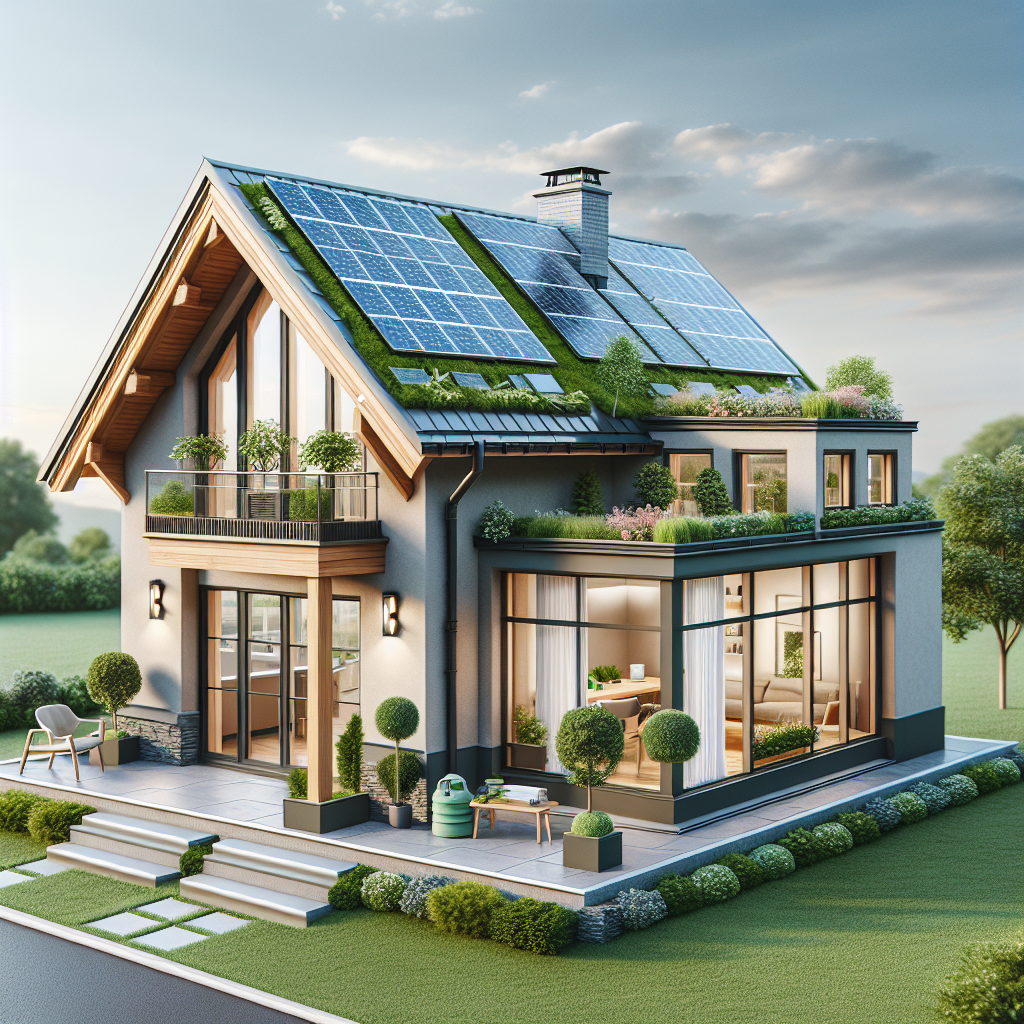
What is Energy Efficiency in Home Construction?
Energy efficiency in home construction refers to the use of design elements, construction techniques, and materials that reduce energy consumption and improve the home’s overall energy performance. This includes everything from the architectural design to the choice of appliances. Efficient homes not only lower utility bills but also contribute to environmental sustainability by reducing greenhouse gas emissions.
Why is Energy Efficiency Important for Homeowners?
For homeowners, energy efficiency means reduced utility costs and a more comfortable living environment. Efficient homes maintain temperature better thanks to improved insulation and HVAC systems, leading to less energy wasted and more consistent indoor climate control. Environmentally, efficient homes help reduce the demand on local power grids and lower carbon footprints, making them crucial in the fight against climate change.
What are the Latest Trends in Energy-Efficient Home Building?
Recent trends include the integration of smart technology, such as automated thermostats and energy-efficient LED lighting systems, and the use of sustainable materials like recycled steel and precast concrete. There’s also a growing emphasis on passive solar building design, which uses the sun’s energy for heating and lighting to reduce electricity use.
How Does Insulation Contribute to an Energy-Efficient Home?
Proper insulation helps maintain the internal temperature of a home by reducing heat loss in winter and heat gain in summer. Key areas to focus on include walls, roofs, and floors. Techniques such as blowing insulation into attic spaces and using insulated concrete forms in construction are effective ways to enhance energy conservation.
What Should I Look for in Energy-Efficient Windows, Doors, and Roofing?
When selecting windows, doors, and roofing, look for products with good insulation properties and energy performance ratings. Double or triple-glazed windows with inert gas fills, energy-efficient doors with good seals, and reflective or green roofing can all contribute significantly to reducing a home’s energy demands.
What are the Initial Steps in Planning an Energy-Efficient Home?
Begin with a comprehensive assessment of local climate and site conditions. This will inform your design choices and material selections. Consulting with architects and builders who specialize in energy-efficient construction early in the planning process can ensure that your home maximizes its energy-saving potential.
How Do I Choose the Right Materials for an Energy-Efficient Home?
Select materials that provide good insulation, durability, and sustainability. Some top choices include high-performance windows, insulated siding, and recycled content materials. Additionally, consider the embodied energy of materials—how much energy is consumed in their production and transport.
Can I Integrate Renewable Energy Sources in My Home Construction?
Yes, integrating renewable energy sources like solar panels or small wind turbines can dramatically increase your home’s energy efficiency. These systems can provide electricity, heating, and cooling, helping to reduce reliance on non-renewable energy sources.
Conclusion
In today’s world, building an energy-efficient home is not just a choice but a necessity. It’s a responsible step towards a sustainable future while ensuring cost savings in the long run. From the initial design to the integration of advanced materials and technologies, every step you take towards energy efficiency is a stride towards a healthier planet and a more sustainable lifestyle.
Remember, whether you’re upgrading an existing home or starting from scratch, professional guidance is invaluable. Don’t hesitate to reach out to the knowledgeable contractors listed on BuildNet’s website. Each contractor is well-versed in modern energy-efficient techniques and can provide you with a free quote tailored to your specific needs. Building smart starts with smart choices – let BuildNet help you make the right ones.

